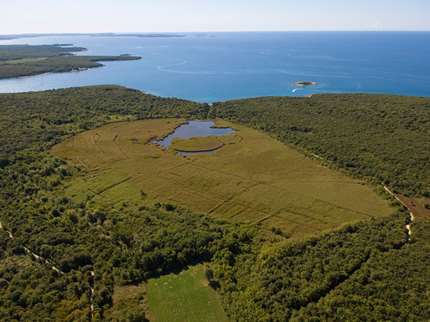Return
+385 (0)52 351 520 info@natura-histrica.hr http://www.natura-histrica.hr
Palud
The Palud Bay is the only ornithological park in Istria with over 200 bird species. By connecting the sea and the swamp, it got inhabited by various animals such as fish who prefer brackish water.
Address:
Find on the mapAudio guide:
How to get there:
The Rovinj - Pula road, turn for Veštar. A 100 meters before the camp entrance, turn left onto the macadam road to the Cisterna beach. The ornithological park Palud is next.
Note:
Park your car at the entrance to the park, then walk for about 10 minutes to the beach, which is mainly rocky with some of its parts in the shadow of the Mediterranean macchia.
The Palud Bay, located eight km south-west of Rovinj, is the only ornithological park in Istria. Water from neighbouring hills and valleys as well as northern side springs turned this natural depression located in the vicinity of the sea into a swamp. During the existence of the Austro-Hungarian military base in Barbariga, the 200 m long canal was dug up to reach the sea for the purpose of preventing the development of mosquito larvae, transmitters of malaria. By connecting the sea and the swamp, Palud attracted new inhabitants such as the grey mullet and eels, species which prefer brackish water. The older inhabitants of the Rovinj area speak of the time when other fish, searching for food, could be found in the swamp. The diversity of species and the number of resident or migratory bird species are the most important feature of this swamp. Ornithologists have noted the stay of over 200 bird species on Palud. Numerous spring and autumn migrations represent an excellent opportunity for observing them. As the park is forbidden to hunters, it is a rich habitat of pheasants, grey partridges and quails. Along with downy oak and holm-oak, in the indigenous dense forests live and nest various species of wild ducks, coots, great crested grebe and water rail, common whitethroat, oriole, woodpecker and many others. The northern part of Palud hides a true rainforest. Seagulls nest on the islets. Along the path is an observation spot which facilitates undisturbed bird watching in their natural environment and their behaviour during feeding, nesting, resting or socialization.





